By Tony Orman – First Published Rod&Rifle Vol. 1 Issue.4
Trout fishing and the fanatics who indulge in it have one failing in that they tend to make the task doubly difficult by creating an air of mystique about the ways and means to catch a trout.
Dry fly fishing has suffered from that for years, probably a result of a certain aristocratic group who didn’t want it thought that they dabbled in any relatively simple fishing method. Nymph fishing has had the same persons who compound the methods and imitation of natural nymphs into such a jumble of latin names and complicated techniques, that many a fisherman is frightened away from enjoying the pleasures of upstream nymph or dry fly fishing.
Having said that, let’s immediately get it straight that everyone finds catching trout a very uncertain business. That’s part of the attraction; if we wanted dead fish, we would be better to go eeling. The human personality enters her because I suspect so many don’t like to admit trout fishing is difficult and that they experience their blank days. Unfortunately, they only talk of the good days.
A beginner could develop a sense of failure listening to these tales of grand days on the river. However, do not fear, for every tale of mighty trout from that chap on his ego trip at the club meeting, there’s at least one trip of a black day which he doesn’t want to talk about or even let you know about. I guess that’s human nature.
Nymph fishing is one of the better ways to catch trout because to put it simply the nymph constitutes a major part of the trout’s diet.
K. Radway Allen did a research on a small stream near Wellington. It became popularly known as the Horokiwi study, after the name of the small stream which flows beside the Paekakariki Hill road, not far from Paremata.
It has been suggested that Horokiwi is a typical New Zealand trout stream. This is a debatable point in view of its size, but the study did give a good insight into trout feeding behaviour.
Radway Allen found that the bottom fauna (i.e. natural nymphs and larvae) made up 95 per cent of the weight of food eaten by trout in their first two years and at least 75 per cent thereafter.
J.S. Phillips published a paper in 1929 in which he exclaimed the food habits of trout in various Wellington district rivers. He compared his results with research of Hudson at the turn of the century and concluded that “the diet of this fish is identical with that of thirty years ago.”
Insects, especially nymphal or laval life, again were predominant.
It is therefore conclusive that trout over decades have based most of their diet around what anglers refer to a nymphs. Notwithstanding that there may be local differences as Phillips points out. One trout from the lower Selwyn River in Canterbury contained nineteen bullies. The trout was 2.3 kg in weight.
Yet Phillips found another fish from the lower Selwyn had almost four hundred water boatmen insects in it. Taupo trout had a lot of bullies in them. It all goes to emphasise the uncertainty.
If I dare to compare my analysis of stomach contents with such high ranking research, I find that the trout from the Hawkes Bay, Wellington, Nelson and Marlborough districts all have shown that nymphs form probably 90 per cent of the diet.
There is a danger in loosely using stomach analysis like this. It should be borne in mind that we are talking about numbers of organisms, and not size. Thus one koura (crawly) cannot be compared to four hundred water boatmen. The one koura may be far greater in terms of food volume and value to the trout.
Similarly within insects, the large green stonefly nymph or the creeper with just a few insects may be equivalent to many mayfly nymphs in a trout. While realising this, there is the practical viewpoint that a trout in taking those mayfly nymphs is going to be involved in long periods of feeding activity.; these being the times when it is most vulnerable to the angler.
Nymphs, however, are a trout’s staple diet. Stomach analyses prove this beyond all doubt, and in consuming them, a trout feeds consistently and for a long period.
There’s a misconception in angling circles that big trout don’t take insects. It is often said, that big trout like big food such as mice, bullies and young trout. Perhaps some do but I think as a general rule, that even for bigger trout, nymphs are a likely way to tempt those above-average fish.
Particularly in faster rivers in the hills you can find a good spot with big trout. Once, Clyde Fraser and myself tramped into the Ruamahunga River, deep in the heart of the Tararua Ranges. We found trout, perhaps not as big as I hoped, but averaging 1 to 1.5 kg. However they proved exceptionally difficult to catch. For a long time we scared trout after trout with our nymph patterns and it wasn’t until we turned to size 14 nymphs of a Pheasant Tail pattern that we attained any success.
Those trout, uneducated and unused to angler’s imitations just would not touch the usual bigger patterns.
Or I could tell you of trout 2.5kg to 4 kg in weight which took nymphs, and which at the time of hooking were concentrating on the current flow for drifting nymphs. Their stomach contents verified this, for there were mayfly, stonefly and other nymphs inside them.
Occasionally you will find big trout on big food, such as mice, cicadas or a koura but that is usually because of some isolated circumstance such as a stray mouse, or a year with a plague of mice, or a windfall of cicadas or a koura chancing along. As a general rule, nymphs are the staple diet of trout big and small.
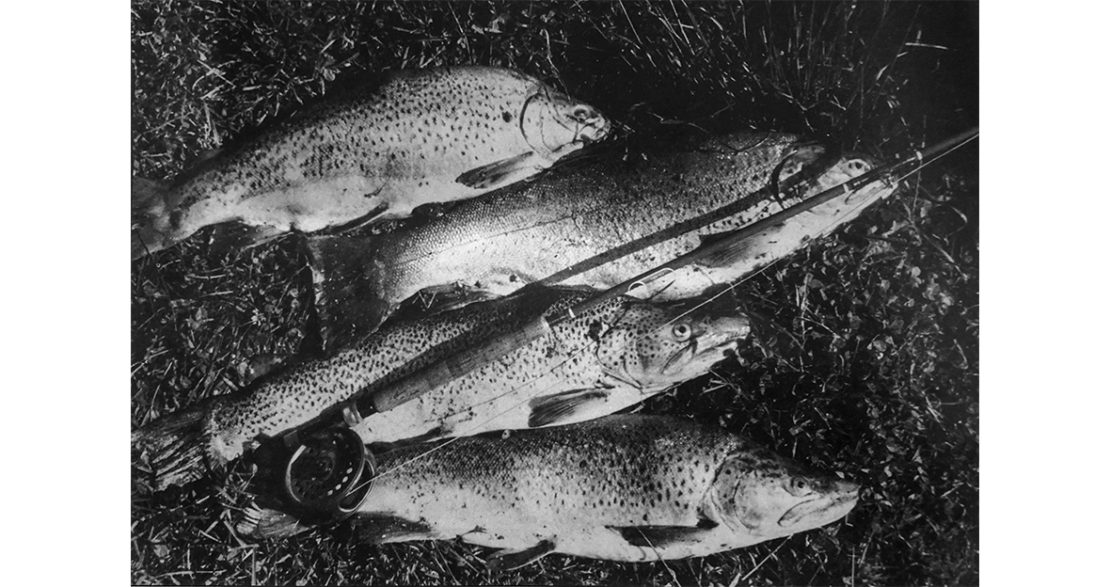
Nymphs must drift with the current. I have heard that some entomologists believe they deliberately release themselves and migrate downstream by drifting. Then when the adults hatch, they fly upstream, to lay above where they hatched and then downstream migration occurs with the offspring. It’s interesting by true or not, it seems that there is a definite drift with nymphs, which trout eagerly await.
Temperatures must stipulate the activity of the nymphs for as the morning warns you can sometimes see trout come out of the pools into shallower water where they can intercept this drift.
Because a trout faces upstream on most occasions waiting for drifting nymphs, an upstream approach by the angler is best. Frequently in many New Zealand waters you can spot trout holding their position facing upstream and feeding on the drift of food.
However spotting trout is not easy, even for persons with exceptionally good eyesight. It becomes a practised art, but with the aid of polaroids, it is a great advantage to spot trout first.
The key with tackle for nymph fishing is a rod which will case a short line, i.e. ten metres. Many rods, designed for Taupo style fishing where seventeen metre casts are needed, just will not work properly with only eight metres of line and nylon cast being used. In nymph fishing the emphasis is on short, accurate cases for most fish. Ideally the line should be a light weight, i.e. AFTMA weight 5 or 6. A floating line with a tapered end is best for maximum proficiency in presentation.
I have seen nymph fishing tackle, for small South Island streams bought on the advise of some tackle sealers, which would be better suited to the Tongariro. A weight 8 line and a rod which won’t cast a short nymph fishing typical New Zealand streams or rivers…
Entomology or a study of the insects is very worthwhile. There is a complete lack of an authorative work on insects pertaining to the diet of trout. Let’s hope this is rectified before long. Basically, natural nymphs can be categorised into:- Mayflies, Caddies, Stoneflies, and a few minor categories such as Creepers (Dobson fly), dragon and damsel flies, water boatmen and Beetles. I hope I’m excused using common names in angler’s terms but that’s so much better than pouring out Ephemeroptera, Trichoptera, Pleceptera, Newroptera, Odonata and other Latin mumbo-jumbo.
One can get a fair amount of criticism adopting a simplified approach to entomology. The purists prefer latin names, and I even had one expert tell me that there were over 20 varieties of stoneflies.
In fact, a number of the stoneflies are of no practical significance to the trout fisherman; one for example inhabiting alpine tussock lands in the mountains.
Similarly within the mayfly and caddis groups, some are of practical use to the angler. For the beginner, the ones to note are:-
Mayfly: Deleatidium, Nesamaletus, Colaburiscus.
Caddis: Horn cased caddis, sandy cased caddis, free living caddis.
Stoneflies: Stenoperla, Leptoperlidae.
Creeper.
Damsel fly.
Dragon fly.
Water boatman.
I have deliberately endeavoured to use common names. Some might cavil at these suggestions, but I would simplify things further by bracketing some patterns (artificial) as imitating more than one of the above. The Pheasant Tail nymph, for example; does a trout lake it for deleatidium, a caddis or whatever? The stonefly pattern might well be taken for a damsel fly nymph at times…remember its what the trout “thinks” and how it interprets the pattern that counts.
With this in mind, I believe an angler could deliberately restrict him or herself, to perhaps six patterns. Variations in sizes would give variation on these six pattern themes.
To me, nymph fishing is very much a mid-morning exercise. I find the hours, say 8.30 a.m. to 1p.m. to be about the most productive hours. Fish frequently feed very actively during these hours, the wind has not got up with the heat of the day and the sun is usually at a good angle to aid in looking into the water and spotting trout.
You don’t have to spot trout to catch them. You can fish upstream, systematically placing your nymph up above you, perhaps with seven to eight metre casts. An important part of the technique is the left hand, assuming you cast right handed. The left hand gathers in the line as the nymph comes back towards you. The taking in of line should be just enough to take up the slack without interfering with the natural drift of the nymph. In fishing “blind” (as the term usually applied. To fishing without spotting trout), the cast or end of the line is watched carefully. You may see it hesitate or the line just momentarily pull under as though the hook has caught the bottom. Tighten up, because it may be a trout.
It’s easy to lay it down in simple terms but believe me, the best teacher is experience and success. Once you’ve caught your first trout on a nymph, then things will fall into place very easily.
In blind fishing, certain places are favoured trout positions. Experience again will teach you the more likely places. In behind a rock, on the side of a swift current, in front of a rock, on the side of a swift current, in front of a rock or sunken log or up in the “eye” of the pool where the rapid runs in, are extremely likely spots. However trout are where you find them…
Look in swift water too. If you examine it carefully, and particularly if there are boulder on the bottom, there will be many little pockets where a trout can wait with comparative ease and watch the current for food. Pocket fishing is blind fishing in that you work your way upstream, pitching your nymph into these pockets, some obvious, some not.
Brown trout can lie in extremely shallow water at times. Look along the edges, particularly in the tails of pools.
Now to return to our study of likely trout food.
The habitat of insects caries although there can be some overlap. Basically, in the rivers you will find mayflies, stoneflies, creeper and caddis, whereas in lakes or backwaters the dragon fly larvae, the damsel fly nymph and water boatman will predominate.
Knowing this basic pattern will give you a blue on which might be the better patterns of nymphs to use.
You will encounter other problems like fish rising to ascending nymphs and taking them as the tiny insects struggle in the surface film. For the time being concentrate on basics, and with this in mind, in the future some basic nymph patterns will be suggested.
Don’t take any book as the gospel. A book should stipulate thinking, not paralyse it. Digest the material and consider it for experimentation on the river.

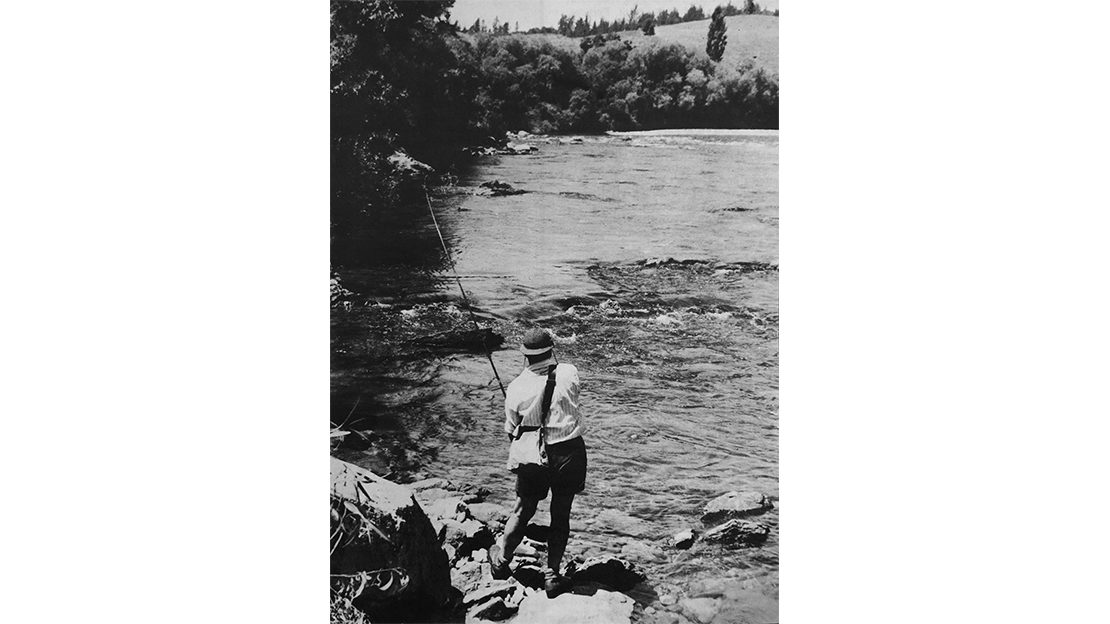
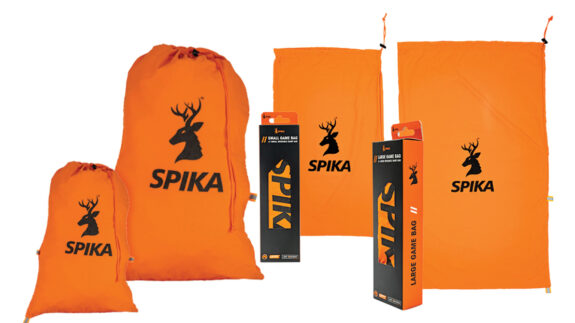
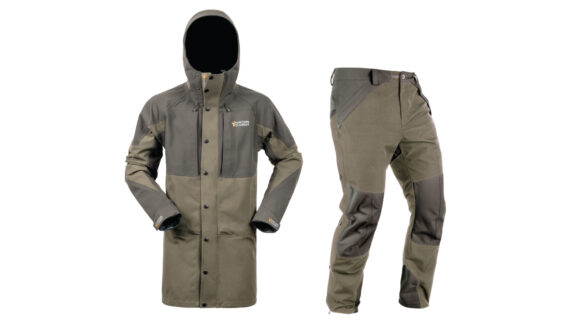

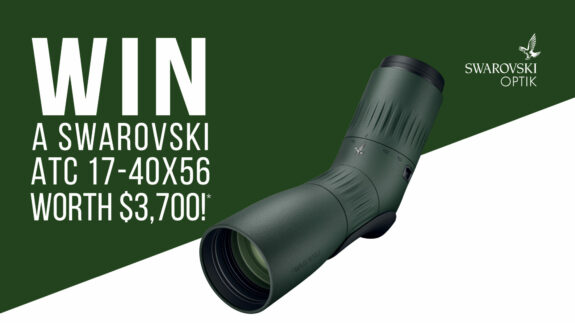
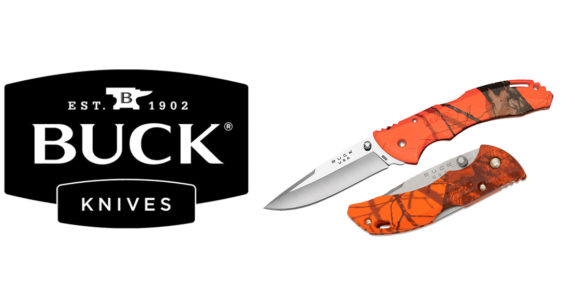
SHARE YOUR BEST PICS #NZRODANDRIFLE